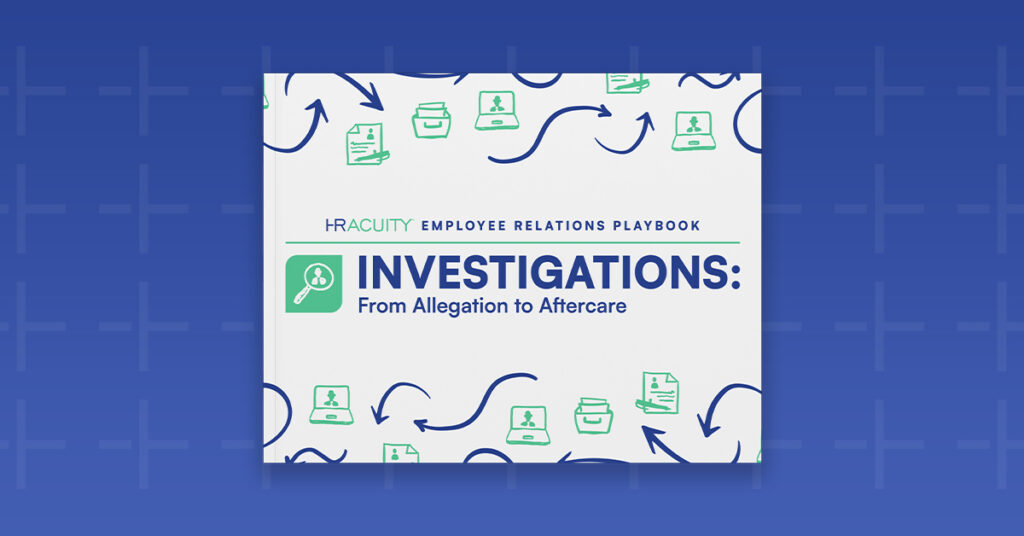TL;DR: Key Takeaways from the Employee Investigations Playbook
-
Clear intake protocols prevent missteps and ensure legal readiness.
-
Use a tiered framework to scope investigation depth and assign the right lead.
-
Scripted outreach and response timelines create consistency and trust.
-
Aftercare is not a luxury — it’s essential for retention and reputation.
-
Top ER teams use tech to guide, track, and debrief investigations at scale.
What Is the Employee Relations Investigation Process?
Employee relations investigations are formal procedures companies follow when workplace complaints or misconduct allegations arise. The process ensures fairness, compliance and trust while minimizing legal and reputational risk.
This playbook from HR Acuity lays out the steps — from first notice to aftercare — backed by data from top ER teams across industries.
Step 1: Intake and Initial Response
Goal: Acknowledge, assess, and triage the complaint within 24 – 48 hours.
Key actions:
-
Acknowledge the complaint (use email templates for speed + consistency).
-
Identify emergency vs. non-emergency complaints.
-
Log the case in your system immediately (manual intake = risk).
Why it matters: The first 48 hours shape employee trust — and set legal risk exposure.
Step 2: Use a Tiered Model to Scope the Investigation
Goal: Match investigation depth to the allegation’s complexity and impact.
Tier 1:
Action: Document only, Example case: Minor social conflict.
Tier 2:
Action: Internal review, Example case: First policy breach.
Tier 3:
Action: External lead, Example case: Harassment involving senior staff.
Step 3: Assign the Right Investigator
Best Practice: Assign based on neutrality, skill ond optics — not availability.
Guidelines:
-
High-profile or exec cases → use external, objective lead.
-
Recurring interpersonal issues → assign internal ER for pattern tracking.
-
Legal implications? Loop in counsel early.
Step 4: Execute the Investigation Plan
Core steps:
-
Plan interviews and evidence gathering
-
Document everything in a centralized system
-
Follow investigation SLAs to resolution
-
Maintain confidentiality rigorously
Pro tip: Use guided workflows in platforms like HR Acuity to standardize steps and flag SLA breaches.
Step 5: Deliver Resolution and Aftercare
Don’t skip aftercare. The way you close a case affects future trust and retention.
Checklist:
-
Notify complainant (even if limited by legal/privacy)
-
Offer support services (EAP, coaching)
-
Log outcomes and debrief managers
-
Flag repeated patterns or gaps for root-cause review
Tools That Scale Investigations
Best-in-class teams use:
-
Case management systems with role-based access
-
SLA-tracked workflows
-
Built-in response templates
-
Trend dashboards and root-cause tagging
Manual systems (email/Excel) lead to inconsistent outcomes, delays, and legal risk.




